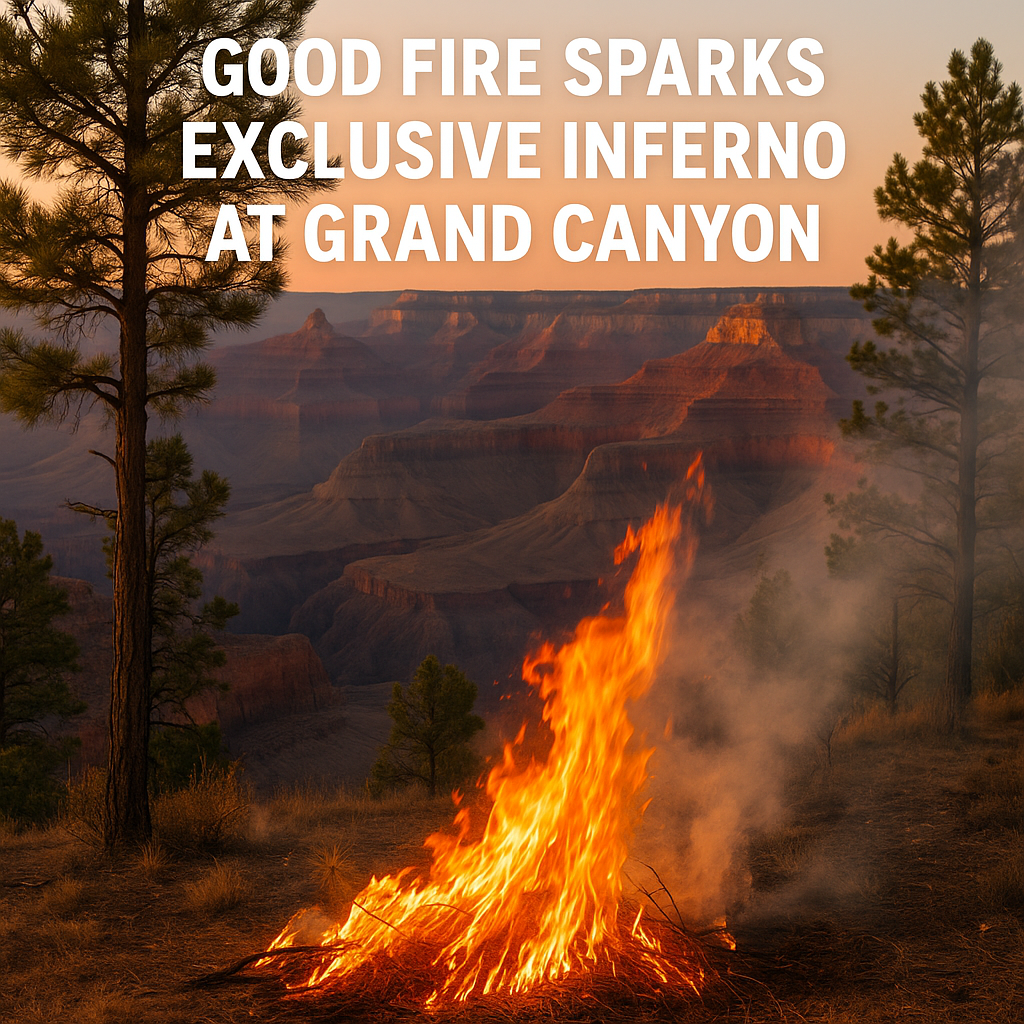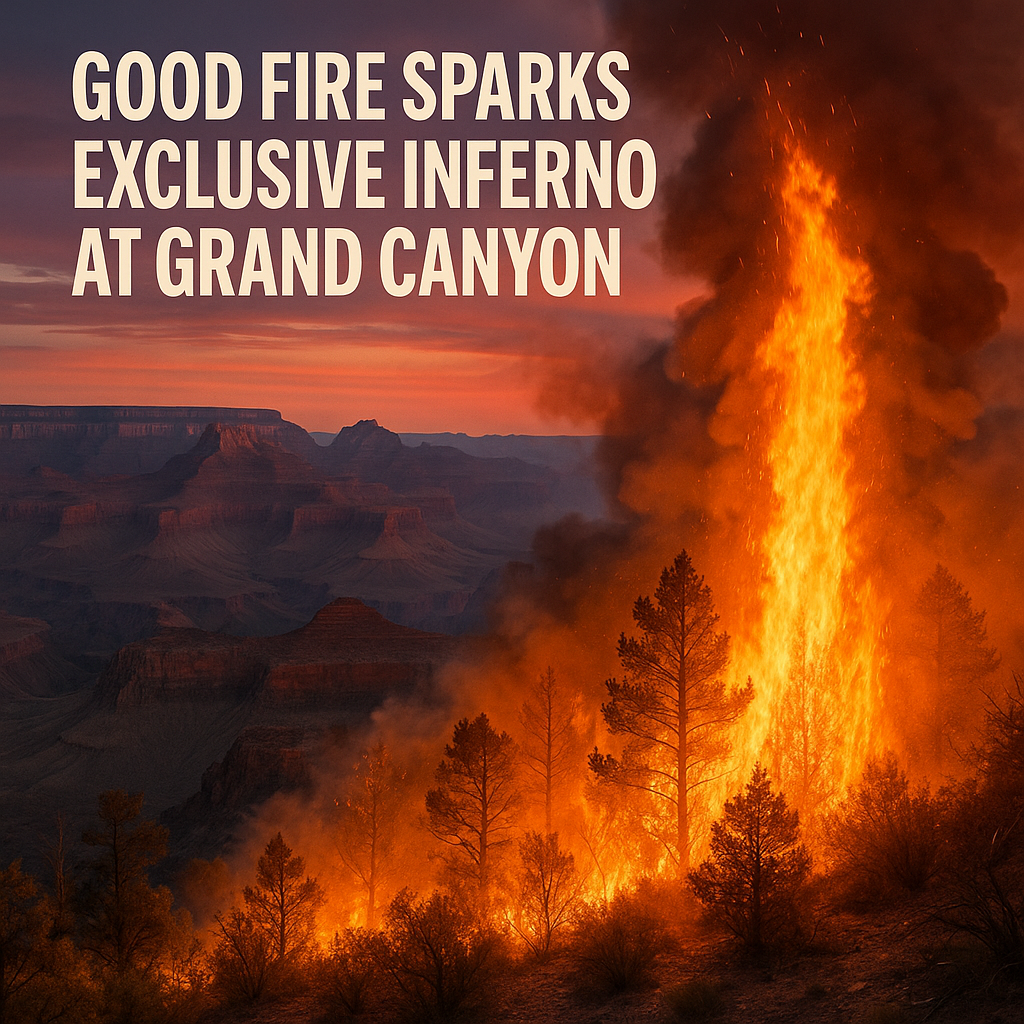Good Fire Sparks Exclusive Inferno at Grand Canyon
Good Fire Sparks Exclusive Inferno at Grand Canyon
The recent transformation of a controlled burn into a fierce wildfire in the Grand Canyon has ignited widespread concern and debate. Dubbed a “good fire,” the initial purpose of the controlled burn was to clear underbrush and promote forest health, but it quickly escalated into an uncontrolled inferno, raising questions about wildfire management practices.
Understanding the Controlled Burn

Controlled burns, also known as prescribed fires, are a forest management tool utilized by agencies to reduce hazardous fuels and promote ecosystem health. In the case of the Grand Canyon, the prescribed fire was intended to alleviate the buildup of underbrush that increases the risk of more severe wildfires. According to experts, these practices can enhance biodiversity, stimulate native plant growth, and decrease the severity of future wildfires.
However, the recent incident highlights the challenges and unpredictabilities inherent in fire management. The fire initially gained support from environmentalists and forest management agencies, who emphasized its benefits for the ecosystem. According to a statement from the National Park Service, “good fires can reduce future risks and promote healthier forests.” The use of fire as a management tool dates back centuries and is a practice embraced by many Indigenous peoples for the health of their lands.
The Inferno Unfolds
Despite the initial intentions, this controlled burn escalated rapidly. Reports indicated that factors such as unpredictable weather, dry conditions, and shifting winds contributed to its rapid spread. Local residents and park visitors expressed alarm as the fire transitioned from a manageable blaze to a raging inferno, raising concerns about public safety and environmental damage.
Industry experts noted that while controlled burns can effectively mitigate wildfire risks, they must be carefully monitored and executed to prevent such disasters. “There’s a delicate balance between control and chaos,” one forest ecologist explained. “When conditions are right, controlled burns are invaluable. But when they go wrong, the ramifications can be severe.”
This situation presents a contrasting viewpoint between the necessity of controlled burns for forest health and the potential dangers they pose if not managed properly.
Weighing the Perspectives
What emerges from this situation is a crucial dialogue on wildfire management techniques. Proponents of prescribed burns argue that, when executed correctly, these fires are essential for ecological balance and to prevent larger, catastrophic wildfires. They assert that without such measures, dense vegetation becomes a tinderbox, potentially leading to more extensive damage down the line.
Conversely, critics highlight the risks involved in conducting these burns, especially in areas where weather conditions can change rapidly. Voices from local communities argue that the fire management strategies must evolve and incorporate more comprehensive safety protocols. “You can’t just let a good fire run wild; there should always be contingencies in place,” stated a resident near the park who witnessed the fire’s ferocity firsthand.
Some studies suggest that many of these incidents can be traced back to inadequate planning or a lack of resources to manage the burns effectively. As wildfire seasons grow longer due to climate change, the challenges of fire management become more complex.
Moving Forward: Lessons Learned
As the Grand Canyon wildfire continues to draw attention, it serves as a reminder of the precarious nature of fire as both a tool for forest management and a force of destruction. Agencies involved in fire management—such as the U.S. Forest Service and the National Park Service—must critically evaluate their practices and consider incorporating adaptive management strategies that respond to changing conditions.
There is no one-size-fits-all solution. Communities, conservationists, and fire management agencies need to work collaboratively, sharing data and resources to develop comprehensive fire plans. Transparency and communication will be pivotal in regaining public trust and ensuring safety.
In summary, while controlled burns like the one seen in the Grand Canyon play an essential role in maintaining ecological health, the incident that unfolded underscores the complexities and risks involved. Moving forward, striking a balance between ecological integrity and public safety must be prioritized.
As the landscape evolves, so too must our understanding of fire management—learning from both successes and setbacks. The lessons learned from this incident may ultimately guide a more nuanced approach to managing fire that prioritizes both biodiversity and community safety, ensuring that good fires don’t spiral into disasters.






